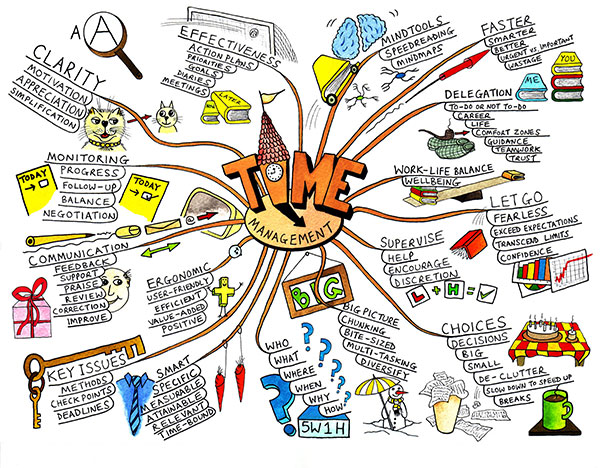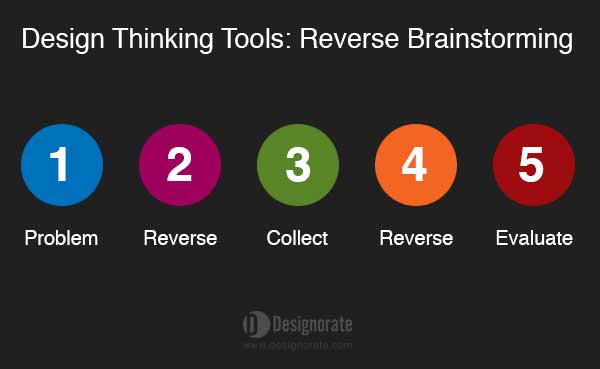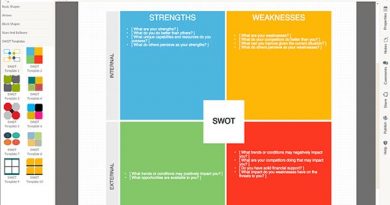How to Run a Successful Brainstorming Session
Many companies and practitioners believe that brainstorming and creative thinking can help companies and teams to focus on their objective and find creative solutions for existing problems. However, many brainstorming sessions fail and do not provide any sufficient results. This failure leads to a waste of critical time at the early stage of the project as well as diminishes team effort and focus. Furthermore, this failure does not only affect the current project but also the team trust in implementing brainstorming or similar techniques in future projects.
While the brainstorming session is a collaborative activity between the attendees and the facilitator, preparing for the session and leading it is the full responsibility of the facilitator. The successful brainstorming session should fit with the company’s decision-making process and lead to improve this process in order to achieve business goals. While most of the brainstorming facilitators focus on sophisticated thinking methods and techniques, they should understand that the session is part of a larger process and the target output is more important than the tools and methods used during the session.
In order to understand the different factors that contributes to the success of the brainstorming session. The factors should be divided into three sessions; before the session, during the session, and after the session.

Before the Brainstorming Session
In the stage before the session, a number of factors should be considered to help running a successful brainstorming session. These factors are related to setting the meeting goals, preparing both the facilitator and the attendees to run a sufficient session within the planned time. These factors include the following:
Identify goals and objectives
The first step to solve any problem is to clearly identify it and understand the different characteristics with the goal to find a solution that targets the problem based on this understanding. Understanding the problem should be a shared goal for both the facilitator and participants. For example, designing a web application for visually impaired users to navigate and read the web can be a topic for a brainstorming session. The objectives in this case should be phrased as following “help visually impaired users to read and navigate websites in a user-friendly environment”. This clear statement defines the consumer (visually impaired users) and the target to 1) read website. 2) navigate through it and 3) the design should be user-friendly.
Work individually First
Many brainstorming sessions turn to become a chatting session with no efficient output. Attendees may not be prepared mentally with predefined ideas and thoughts to share during the session. Most people think in a chaotic way and then start to organize their thoughts. In order to avoid this loss of time, the attendees should start by thinking of the problem individually and organizing his or her thoughts. These thoughts are shared and discussed during the brainstorming session. Ideas that are discovered during the session should be considered as part of the brainstorming session development.
Define tools and methods that will be used
There are many tools and techniques that can be used in the brainstorming session. The mind map is one of the commonly used tools. It was discussed in a previous article; How to Use Mind Mapping for Better Thinking. There are also a number of mind mapping tools and applications that can be used during the session.
In addition to mind mapping, there are many other techniques related to design thinking and how to solve problem creatively such as the following:
- SCAMPER Technique
- Hudson’s Production Thinking Model
- Reverse Brainstorming
- Six Hats of Critical Thinking (De Bono thinking hats)
- Lego Serious Play
Determining which tool or method to implement depends on different factors such as the type of the problem and the demographic information of the employees. Tools such as Lego Serious Play requires attendees to have basic understanding of the method and how it is used. If the problem is hard to fix using the regular methods, reverse brainstorming can be used in finding other alternative to solve problems.

Determine the size of the brainstorming group
The brainstorming process requires engagement of all the attendees. Therefore, the facilitator should define the number of the attendees in the session and who is going to attend the session. In companies, stakeholders and individuals involved in the process should be part of the brainstorming session. This will lead to a more focused discussion and better understanding of the target problem and its nature.
The number of attendees in the brainstorming group affects the interaction of each attendee. While small groups are easier to manager and ensures better engagement, large group drives more ideas to develop. Choosing the number of the group is based on the problem, the company team, and the employees involved in the process. The approximate number of attendees in a small group is 3-4 people, while larger groups can range from 12 – 15.
Session location
In order to allow focus during the brainstorming session, the facilitator should hold the session in a quiet place that allows the team to be isolated from external distractions. In small groups, the team can set in rounded meeting table. In larger groups, a theater-like meeting room with a stage allows engaging all the attendees equally.
During the Session
After preparing for the session, the facilitator should focus on the factors that contribute to success during the session in order to reach the desired target. During the meeting a number of rules should be followed such as following:
Encourage any ideas
During the brainstorming session, any ideas can be a starting point for a solution even if the rough idea does not look realistic. The facilitator should not reject any type of ideas at this stage. All ideas are a potential case to develop and improve to achieve the target goal.
Handle ideas equally
The facilitator should deal with all the ideas equally. All ideas discussed have the same priority and importance during the session. In a later stage, those ideas got filtered and optimized.
Each attendee presents the ideas based on a specific point of view and experience; this experience can be used to develop either the same idea or other ideas during the discussion.
Discuss and expand ideas
The ideas discussed during the session start with rough ideas that each of the attendees brainstormed individually. Discussing other ideas contribute developing the idea or other ideas to shape it in a form of solution for the problem.
Focus on quantity
At the early stage of the brainstorming session, the facilitator should focus on increasing the pool of the ideas by focusing on the quantity rather than the quality. As mentioned, earlier, different ideas contribute to developing each other in order to reach a professional solution. The large number of ideas increases the chance for reaching better solutions especially in small groups.
Do not critique
Criticism halts people’s creativity and encouragement to share ideas. During the session, the facilitator should judge ideas positively not negatively. All the criticism should be postponed to the end of the session.
Do not affect attendees
One of the factors that cause the brainstorming session to fail is how the facilitator runs the discussion. Many facilitators try to direct the discussion in a specific direction or steer towards certain types of pre-defined solutions. This type of control may have negative impact on the attendees as well as the session. As a result, the attendees may feel uncomfortable or controlled, the session does not achieve its targeted aim.
After the session
At the end of the session, both facilitator and attendees should have a clear understanding the selected solution and how to implement it in the project in the action plan. Attendees understand their task to in order to achieve this goal. The brainstorming session contributes to planning for the production phase of the project.
Implementing the brainstorming session resulted ideas should be followed by an assessment of the session and how it affected the success of the project in solving the targeted problem. This assessment evaluates the efficiency of the brainstorming session and how to it can be improved in the projects to follow.
Conclusion
Brainstorming is one of the efficient methods that achieve group thinking between the project team members and/or company stakeholders to solve problems and achieve innovation. All stakeholders should be part of the session to cover the problem from different perspectives. However, many of the facilitators fail to achieve the goal of the brainstorming session due to the inefficient definition of the problem and lack of experience to run successful brainstorming sessions.
A number of factors contributes to the success of the brainstorming session, these factors include observations on the stage before the session, the discussion time itself, and the implementation of the best solution in the production phase.







Yes, to solve any problem, first we should understand it and go behind the solutions to solve it. To run brainstorming sessions, it’s mandatory to prepare effective agenda and need to invite only necessary persons.